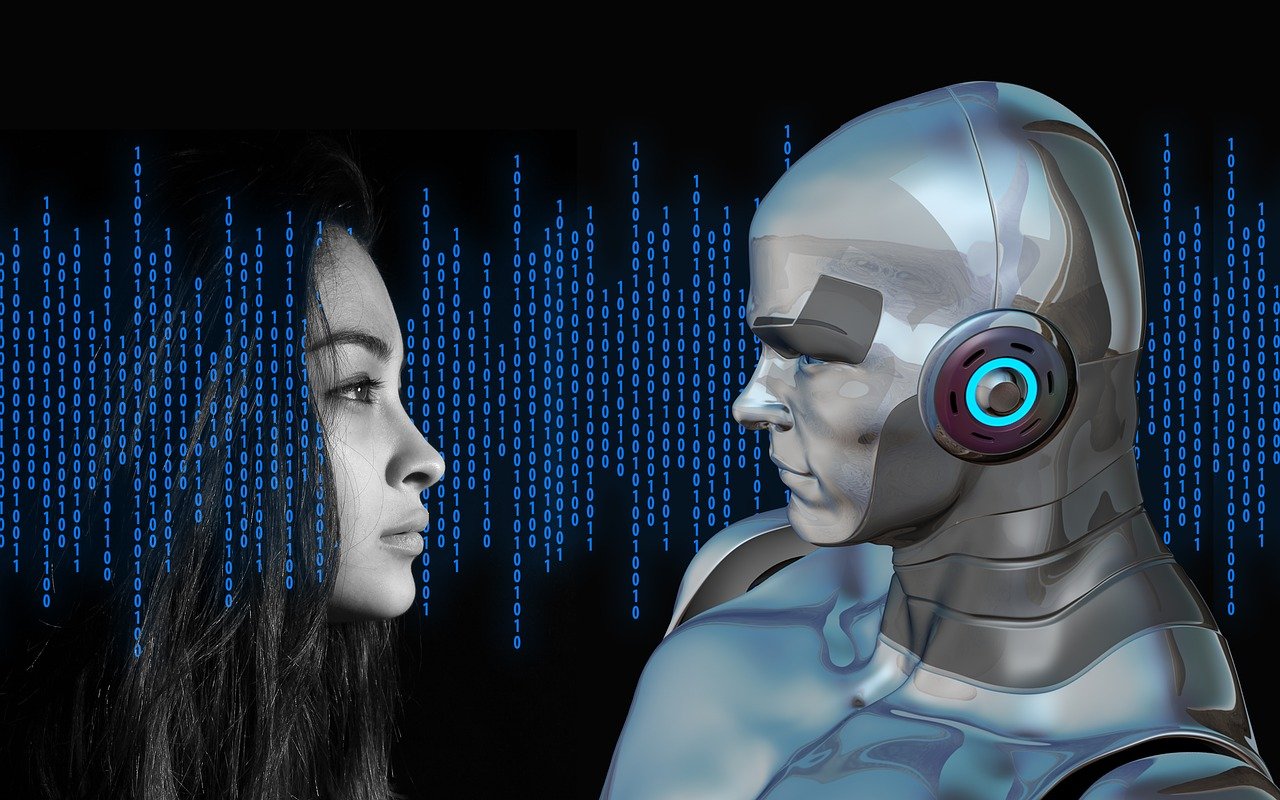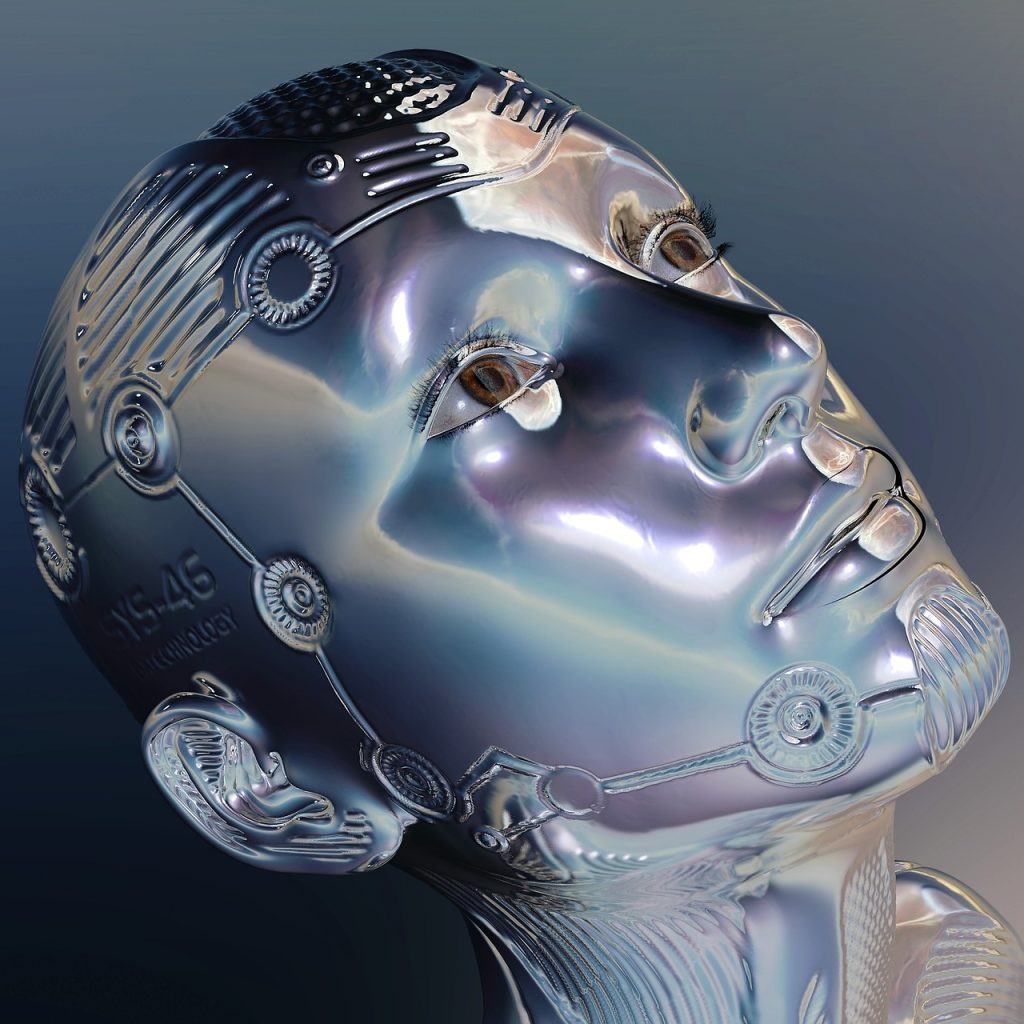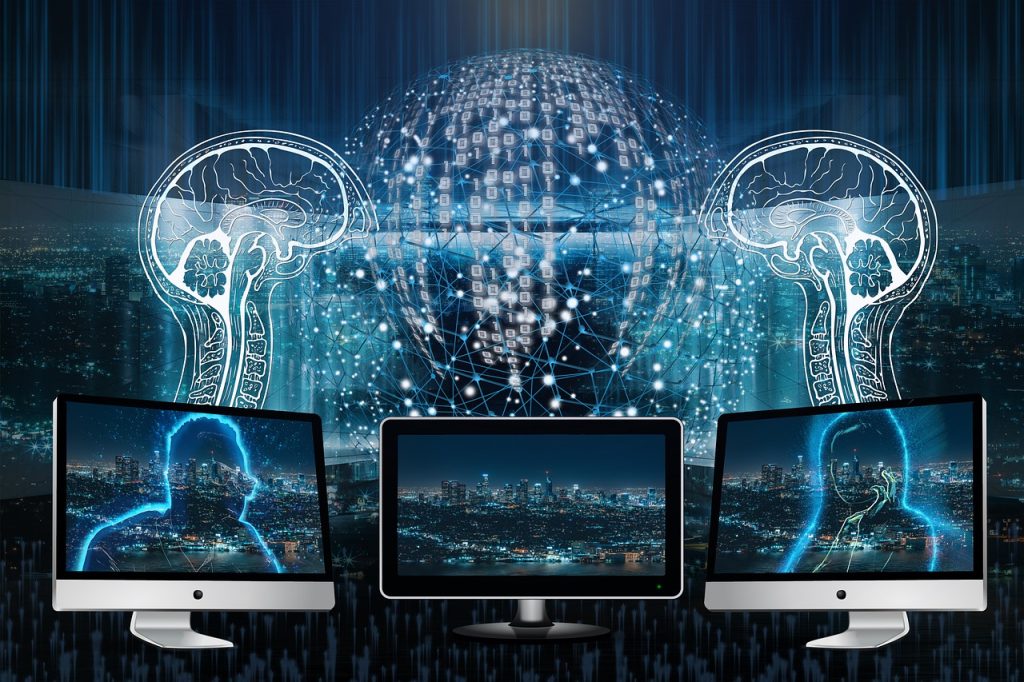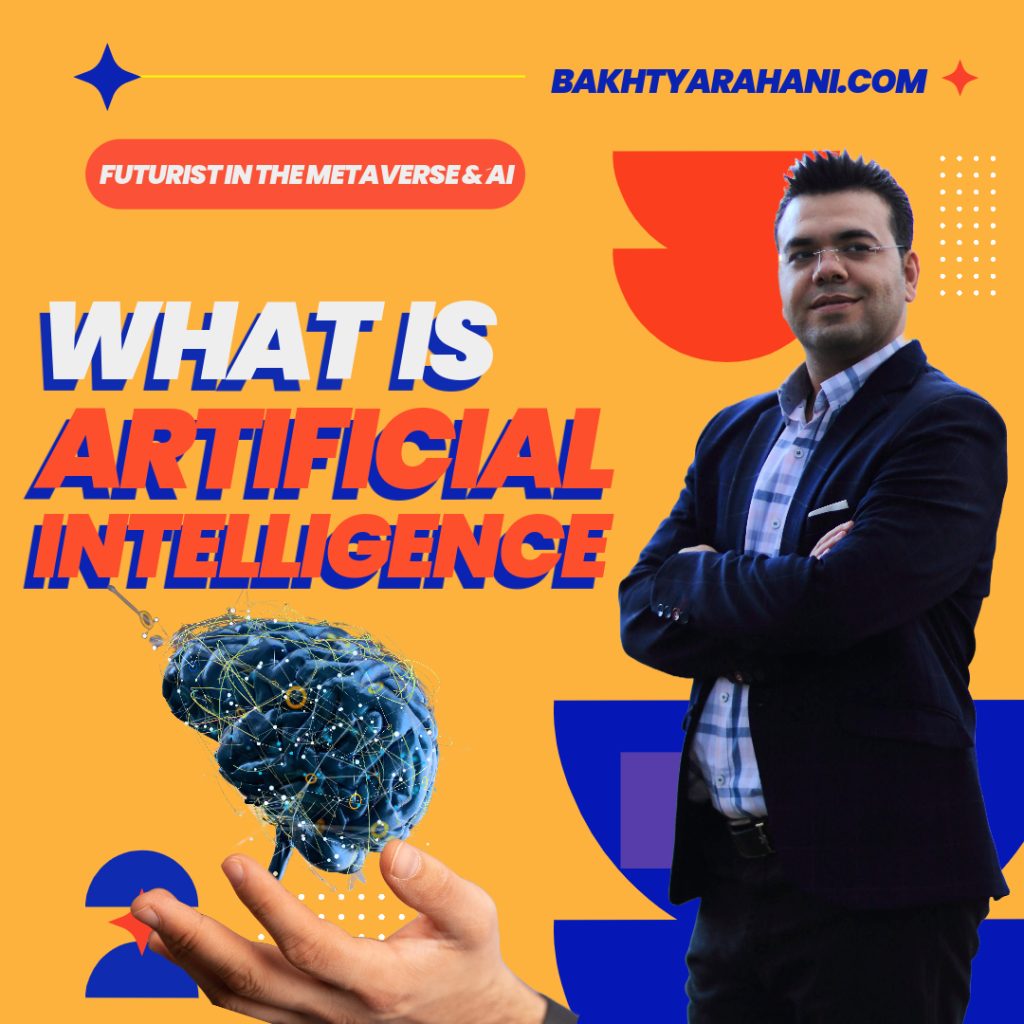What is artificial intelligence (AI)?
Artificial Intelligence (AI) refers to the ability of a computer or machine to perform tasks that typically require human intelligence. It involves the development of computer systems that can think, learn, and make decisions autonomously, based on patterns, data, and algorithms. AI encompasses a wide range of technologies and approaches, including machine learning, natural language processing, computer vision, robotics, and expert systems. AI has the potential to revolutionize various industries, including healthcare, finance, transportation, and manufacturing, by automating tasks, improving efficiency, and driving innovation.

How does AI work?
At its core, AI works by utilizing algorithms and data to enable machines to learn from experience, recognize patterns, and make decisions. Here’s a simplified overview of how AI works:
Data Collection: AI systems require large amounts of data to learn from. This data can come from various sources such as sensors, databases, or the internet.
Data Preprocessing: The collected data is cleaned, organized, and transformed into a format that can be easily understood by AI algorithms.
Training: The preprocessed data is used to train AI algorithms, which learn from the data by identifying patterns and relationships.
Testing: The trained AI models are tested on new data to evaluate their performance and accuracy.
Deployment: Once the AI model is trained and tested, it can be deployed to perform tasks autonomously, such as making predictions, recognizing images or speech, or making decisions.
Continuous Learning: AI models can be updated and improved over time with new data, allowing them to continuously learn and adapt to changing circumstances.
Overall, AI systems rely on data, algorithms, and continuous learning to make decisions and perform tasks that would typically require human intelligence.

Why is artificial intelligence important?
Artificial intelligence (AI) is important because it has the potential to revolutionize various aspects of our lives by bringing automation, efficiency, and innovation to a wide range of industries. Here are some simple reasons why AI is important:
Automation: AI can automate repetitive and mundane tasks, freeing up humans to focus on more complex and creative tasks.
Efficiency: AI can analyze large amounts of data quickly and accurately, leading to more efficient decision-making and problem-solving.
Innovation: AI enables the development of new technologies and solutions that can transform industries, such as autonomous vehicles, personalized healthcare, and smart cities.
Personalization: AI can personalize user experiences, such as recommendations in online shopping, content suggestions in social media, and personalized healthcare plans.
Improved Decision Making: AI can provide insights and predictions based on data analysis, helping businesses and individuals make informed decisions.
Enhancing Human Abilities: AI can augment human capabilities, such as speech recognition, language translation, and image recognition, making tasks easier and more efficient.
In summary, AI has the potential to revolutionize industries, enhance human capabilities, and improve decision-making, making it an important technology with broad applications across various domains.
What are the advantages and disadvantages of artificial intelligence?
advantages and disadvantages of artificial intelligence (AI):
Advantages of AI:
- Automation of repetitive tasks, saving time and resources.
- Improved accuracy and efficiency in data analysis and decision-making.
- Enhanced productivity and innovation through the development of new technologies and solutions.
- Personalized user experiences, tailored to individual preferences and needs.
- Augmentation of human capabilities, making tasks easier and more efficient.
- Potential for solving complex problems and addressing societal challenges.
Disadvantages of AI:
- Ethical concerns, such as bias and discrimination in AI decision-making.
- Security risks, such as the potential for misuse and abuse of AI technologies.
- Loss of jobs and workforce displacement due to automation of tasks previously performed by humans.
- High development and implementation costs for advanced AI technologies.
- Limited ability to understand and replicate human emotions, creativity, and empathy.
- Potential for unintended consequences and lack of accountability in AI decision-making.
It’s important to note that the advantages and disadvantages of AI can vary depending on the specific use case and implementation, and proper ethical considerations and regulations are necessary to mitigate potential risks and ensure responsible and beneficial use of AI technologies.

What are the 4 types of artificial intelligence?
The four main types of artificial intelligence (AI) are:
Reactive AI: This type of AI operates solely based on its current input without any memory or past experiences. It does not have the ability to learn or adapt to new situations.
Limited Memory AI: Also known as “stateful” or “semi-autonomous” AI, this type of AI can store and recall past data to make decisions in the present. However, its memory is limited to a specific time frame and does not have the ability to learn beyond that.
Theory of Mind AI: This type of AI has the ability to understand and interpret human emotions, intentions, and beliefs. It can recognize and respond to human emotions, making it more advanced than reactive and limited memory AI.
Self-Aware AI: Also known as “strong” or “fully autonomous” AI, this type of AI has self-awareness and consciousness similar to humans. It can think, learn, adapt, and make decisions on its own without human intervention. However, self-aware AI is still a theoretical concept and does not currently exist in reality.
It’s important to note that these types of AI are not mutually exclusive and can overlap in certain applications. The field of AI is constantly evolving, and advancements in technology may blur the lines between these types in the future.
What are examples of AI technology and how is it used today?
Artificial intelligence (AI) is used in various applications and industries today. Here are some examples of AI technologies and their current uses:
Natural Language Processing (NLP): NLP is used in virtual assistants like Siri, Alexa, and Google Assistant to understand and respond to human voice commands. It is also used in language translation apps, sentiment analysis in social media, and automated customer service chatbots.
Machine Learning: Machine learning algorithms are used in recommendation systems like those used by Netflix and Amazon to provide personalized recommendations to users. It is also used in fraud detection, credit scoring, and image recognition applications.
Computer Vision: Computer vision, a subset of AI, is used in facial recognition technology, autonomous vehicles, surveillance systems, and medical imaging to analyze and interpret visual data.
Robotics: AI-powered robots are used in industries such as manufacturing, logistics, and healthcare for tasks like assembly line automation, warehouse management, and surgical procedures.
Virtual Reality (VR) and Augmented Reality (AR): AI is used in VR and AR applications for simulations, training, and interactive experiences, such as virtual tours, gaming, and architectural design.
Predictive Analytics: AI is used in predictive analytics for forecasting stock prices, predicting weather patterns, and identifying potential disease outbreaks.
Personalized Marketing: AI is used in digital marketing for personalized product recommendations, targeted advertisements, and customer segmentation.
These are just a few examples of how AI is currently used in various industries, and the applications of AI are constantly expanding as technology advances.

What are the applications of AI?
Artificial intelligence (AI) has numerous applications across various industries. Some common applications of AI include:
Natural Language Processing (NLP): AI is used in NLP applications for speech recognition, language translation, sentiment analysis, and chatbots for customer service.
Machine Learning: AI-powered machine learning algorithms are used for image and video recognition, recommendation systems, fraud detection, and predictive analytics.
Computer Vision: AI is used in computer vision applications for facial recognition, object detection, and image analysis in fields such as healthcare, surveillance, and autonomous vehicles.
Robotics: AI-powered robots are used in industries such as manufacturing, logistics, and healthcare for tasks such as assembly line automation, warehouse management, and surgical procedures.
Virtual Reality (VR) and Augmented Reality (AR): AI is used in VR and AR applications for simulations, training, gaming, and interactive experiences in fields such as gaming, education, and architecture.
Personalized Marketing: AI is used in digital marketing for personalized product recommendations, targeted advertisements, and customer segmentation.
Healthcare: AI is used in healthcare for diagnosis and treatment recommendation, drug discovery, remote patient monitoring, and personalized medicine.
Finance: AI is used in finance for fraud detection, risk assessment, automated trading, and customer service.
Transportation: AI is used in autonomous vehicles, traffic management, and logistics optimization for efficient transportation systems.
Agriculture: AI is used in agriculture for crop monitoring, soil analysis, and automated farming.
These are just some of the many applications of AI, and the potential uses of AI are constantly evolving as technology progresses.
The Role of Artificial Intelligence (AI) in the Metaverse
Artificial intelligence (AI) has the potential to revolutionize the metaverse in a number of ways. Here are some examples:
- Creating more realistic and interactive virtual worlds: AI can be used to create more realistic and interactive virtual worlds, with more complex characters and environments. This could make the metaverse a more immersive and engaging experience for users.
- Personalizing the metaverse experience: AI can be used to personalize the metaverse experience for each user. For example, AI could be used to recommend virtual activities and experiences that users are likely to be interested in, or to create custom avatars and environments that reflect users’ individual tastes and preferences.
- Making the metaverse more accessible and inclusive: AI can be used to make the metaverse more accessible and inclusive for users of all abilities. For example, AI could be used to develop new ways for people with disabilities to interact with the metaverse, or to translate languages in real time so that people from all over the world can communicate with each other.
- Improving the security and privacy of the metaverse: AI can be used to improve the security and privacy of the metaverse. For example, AI could be used to detect and prevent fraud and cyberattacks, or to protect users’ personal data.
Here are some specific examples of how AI is already being used in the metaverse today:
- AI-powered chatbots: AI-powered chatbots are being used in the metaverse to provide customer support, answer questions, and give users tours of virtual worlds.
- AI-generated content: AI is being used to generate realistic and engaging content for the metaverse, such as virtual characters, environments, and objects.
- AI-powered games: AI is being used to develop new and innovative games for the metaverse. For example, AI can be used to create non-player characters (NPCs) that are more intelligent and realistic, or to generate game worlds that are constantly evolving and changing.
Overall, AI has the potential to play a major role in the development and success of the metaverse. By making the metaverse more realistic, engaging, accessible, and secure, AI can help to create a truly immersive and transformative experience for users.

What is the history of AI?
The history of artificial intelligence (AI) can be traced back to ancient times when philosophers and inventors were fascinated by the concept of creating intelligent machines. However, the modern field of AI as we know it today began to take shape in the mid-20th century. Here is a brief overview of the key milestones in the history of AI:
1943-1956: Early Foundations of AI – During this period, researchers like Warren McCulloch and Walter Pitts developed the first artificial neural networks, and Alan Turing proposed the Turing Test as a measure of machine intelligence.
1950s-1960s: Dartmouth Conference and Early AI Programs – In 1956, the Dartmouth Conference is widely regarded as the birthplace of AI as a field of study. During this period, AI researchers developed early AI programs for tasks like playing chess and solving logic puzzles.
1960s-1970s: Symbolic AI and Expert Systems – Researchers focused on symbolic AI, which involved using formal logic and symbolic representations to mimic human reasoning. Expert systems, which used knowledge-based inference systems, became popular during this period.
1980s-1990s: Knowledge-Based Systems and Machine Learning – Researchers explored knowledge-based systems and machine learning approaches, including rule-based systems, decision trees, and neural networks. Expert systems became commercially popular but faced limitations in handling uncertainty and complex tasks.
1990s-2000s: Evolution of Machine Learning and Practical Applications – Machine learning techniques such as support vector machines, clustering algorithms, and reinforcement learning gained prominence. Practical applications of AI started to emerge, including speech recognition, computer vision, and data mining.
2010s-Present: Deep Learning and Big Data – Deep learning, a subset of machine learning, gained momentum with the development of neural networks with many layers. Big data and advancements in computing power fueled breakthroughs in areas like natural language processing, image recognition, and autonomous vehicles.
The history of AI is marked by significant advancements in research, technology, and applications, with continued progress and evolution in the field. Today, AI is being used in various industries and continues to shape the way we live, work, and interact with technology.

